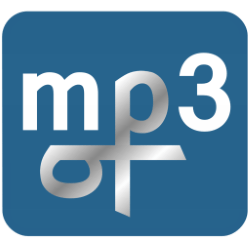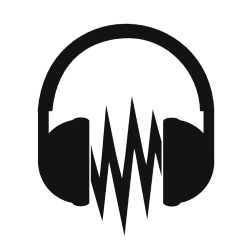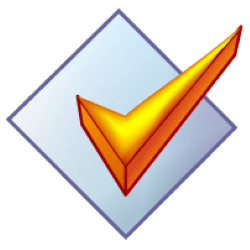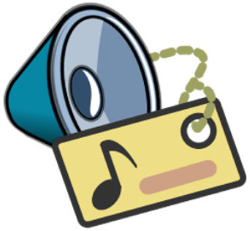Downloads
-
- Audacity Download
- Audacity Linux AppImage
- Antivirus
- 0 / 0
- Version
- 3.5.0
- Size
- 107.2 MB
- File
- Signature
-
- Audacity Download
- Audacity macOS DMG for Apple Silicon
- Antivirus
- 0 / 0
- Version
- 3.5.0
- Size
- 23.6 MB
- File
- Signature
-
- Audacity Download
- Audacity macOS DMG
- Antivirus
- 0 / 0
- Version
- 3.5.0
- Size
- 50.6 MB
- File
- Signature
-
- Audacity Download
- Audacity macOS DMG for Intel Macs
- Antivirus
- 0 / 0
- Version
- 3.5.0
- Size
- 25.3 MB
- File
- Signature
-
- Audacity Download
- Audacity Audacity Manual
- Antivirus
- 0 / 0
- Version
- 3.5.0
- Size
- 21.3 MB
- File
- Signature
-
- Audacity Download
- Audacity Audacity Sources
- Antivirus
- 0 / 0
- Version
- 3.5.0
- Size
- 54.9 MB
- File
- Signature
-
- Audacity Download
- Audacity Windows 32-bit Installer
- Antivirus
- 0 / 0
- Version
- 3.5.0
- Size
- 13.9 MB
- File
- Signature
-
- Audacity Download
- Audacity Windows 32-bit Zip
- Antivirus
- 0 / 0
- Version
- 3.5.0
- Size
- 20.6 MB
- File
- Signature
-
- Audacity Download
- Audacity Windows 64-bit Installer
- Antivirus
- 0 / 0
- Version
- 3.5.0
- Size
- 15.3 MB
- File
- Signature
-
- Audacity Download
- Audacity Windows 64-bit Zip
- Antivirus
- 0 / 0
- Version
- 3.5.0
- Size
- 22.5 MB
- File
- Signature
-
- Audacity Download
- Audacity Checksums
- Antivirus
- 0 / 0
- Version
- 3.5.0
- Size
- 1.3 kB
- File
- Signature
# Change Log
Audacity 3.5 adds cloud saving, beat detection, pitch shifting and more.
## Major changes
* Cloud project saving
We've introduced a new cloud-saving feature that allows you to save your Audacity projects to audio.com. This allows you to work from any device, share & collaborate with others and restore previous versions if something went wrong.
* Automatic tempo detection
Audacity can now automatically detect the tempo of imported loops, and adjust them to be in tempo.
Tempo detection is done via both audio analysis and metadata checking. If you want to prepare your loop for automatic tempo detection without relying on audio analysis, both acidizer tempo tags or simply writing "123 bpm" anywhere into the filename work.
Automatic tempo detection can be turned off via Preferences - Import/Export.
* Pitch shifting
You now can non-destructively change the pitch of a clip by holding Alt and pressing the Up and Down arrow keys. Alternatively, you can click on the overflow menu (...) and select "Pitch and speed...". When changing the pitch this way, an arrow in the UI indicates how much you've shifted it.
## Other changes
### Additions
* Added an option to skip plugin scanning to Preferences - Effects.
* Added an overflow menu, as well as speed and pitch indicators to clips.
* Added subtitle formats for labels. Export to WebVTT and SubRip and import of SubRip files is now supported. (Thanks, Pokechu22 and Larry Bordowitz!)
### Changes
* Reworked the plugin manager.
* Improved accessibility. (Thanks, David Bailes!)
* When zooming in vertically (Ctrl+scroll on the vertical scale), the zeroline now remains centered. Moving the vertical zoom off-center still is possible via Shift+scroll on the vertical scale.
* Changed the look of the selection adjust cursors (previously pointing fingers on Windows and macOS, now look like | everywhere).
* Changed the timeline options button from a green triangle to a settings gear. From it, you can switch between Beats & Measures or hh:mm:ss timeline rulers, set various preferences regarding to looping, as well as playhead behaviors: "Scroll view to playhead" (previously: "Update display while playing") and "Continuous scrolling" (previously: Pinned Play Head).
* Improved BSD support. (Thanks, Brad Smith!)
* macOS: Changed the Audacity.app icon on macOS to fit new design guidelines.
* Reordered some menus.
* Moved OK/Cancel buttons of effects to the bottom.
### Removals
There have been a number of removals of niche features to simplify the app. This should make the app a bit less overwhelming to use, and also will speed up future development as fewer things need to be considered.
* Removed the read-only mouse preferences page.
* Removed Printing options.
* Removed Screenshot tool. To make a screenshot, use Win+Shift+S (Windows) or Cmd+Shift+4 (Mac) instead.
* Removed Karaoke view.
* Removed the "solo=none" preference.
* Removed timeline tooltips preference.
* Removed "dragging selection edges" preference.
* Removed some warning dialogs and associated preferences.
* Removed "scrolling left of zero" preference.
* Replaced "Advanced Vertical Zooming" with new always-on behavior.
* Removed some vertical zoom presets.
* Removed EQ XML to TXT converter, which was needed for the Audacity 2.3 - 2.4 transition. It is now a plugin instead, downloadable at https://plugins.audacityteam.org/additional-resources/eq-curves/eq-xml-to-txt-converter.
* Removed the "Vocal reduction and isolation" effect. As a replacement on Windows and Linux, the Intel OpenVINO plugins work better and on a wider array of content, including mono tracks. The old effect still can be downloaded from https://plugins.audacityteam.org/nyquist-plugins/effect-plugins/filters-and-eq#vocal-reduction-and-isolation
### Bugfixes
* Fixed a number of dialogs that were able to grow too large to fit on the screen.
* #2133 Fixed the playback cursor sometimes desynchronizing with actual playback. (Thanks, David Bailes!)
* #3723 #5615 Fixed the GetInfo scripting command.
* #5283 Fixed "Reset configuration" command breaking modules preference page.
* #5389 Fixed stereo tracks randomly splitting into mono.
* #5500 The Export Audio - (external program) option remembers the command line argument again.
* #5670 #3903 Fixed the Compressor effect sometimes corrupting audio. (Thanks, David Bailes!)
* #5580 #4952 Fixed Timer Record sometimes failing to export. (Thanks, David Bailes!)
* #5681 Fixed incorrect level measurements for mono tracks in Noise Gate effect. (Thanks, Steve Daulton!)
* #5750 When exporting multiple files, the mono/stereo setting is now honored properly.
* #5848 Fixed some effects failing when language is set to German, Korean, Dutch, Slovenian, or Turkish.
* #5868 #1548 Fixed 8 and 9 inputs not working on keyboard inputs which have AltGr+8/9 mean [ and ]. (Thanks, David Bailes!)
* #5858 Fixed Audacity crashing when making a stereo track using keyboard. (Thanks, Joe Souza!)
* #5976 Fixed the "Set default" button not working in the metadata editor. (Thanks, dg-no-9!)
* #5977 Linux: Fixed a memory leak in Wayland by explicitly running on X11. (Thanks, Takahashi, Naoki!)
Description
Download Audacity ® a free, open source (cross-platform) digital audio editor, recorder, and mixer. It is a sophisticated software application that comes with an extensive list of features.
Features
- recording (from a microphone or mixer)
- import/export of WAV, AIFF, AU, FLAC, MP3 (via LAME encoder) Ogg Vorbis files
- advanced editing (cut, copy, paste, delete commands with unlimited "Undo" and "Redo," multitrack mixing)
- digital effects (change the pitch, remove background noises, alter frequencies, remove vocals, create voice-overs for podcasts, etc.) and plug-ins (support for LADSPA, Nyquist, VST Audio Unit, including VAMP analysis plug-ins).
The full list of Audacity® features can be found on its official homepage here. Audacity is available under the GNU General Public License (GPL), offers support for over 20 languages and it runs on Microsoft Windows®, Mac OS X®, and Linux®.
Trademark Note 1: Microsoft®, Windows® and other product names are either registered trademarks or trademarks of Microsoft Corporation in the United States and/or other countries.
Audacity® Review
Setup: Please note that when you install Audacity® for the first time (in Windows), you will be prompted to install two shipped DLL effects (hard limiter and sc4) which are not VST's, and they will load in Audacity whatever you decide in the dialog. You can find them in "Plug-Ins" folder, and if you need to add a new effect later, you should check the manual, section "Adding a new VST effect in Audacity(R)."
Important: I've seen a lot of useful programs without a proper help guide. Audacity® is a positive example of how support should look for the "regular" user. When you open this application for the first time, there's a dialog window named "How to Get Help." The first two support links "Quick Help" and "Manual" point respectively to the "Getting Started" section and the front page of the Manual. The Manual is present if you get the Windows Installer or Mac DMG file, so no internet connection is needed to start learning and experimenting.
If you download the ZIP or the source code, you can still download and install the Manual. Otherwise, you will need an Internet Connection for the online version of the Manual.
Introduction: Audacity® is a sophisticated tool, you can achieve a lot of things, but still, unless you're an audio engineer, a passionate or advanced user, you have to spend some time with the help files. I believe most (novice) users use this software to perform only one or a few functions. For those who never used this program before, I thought it might be a good idea to list a couple of things that Audacity® can accomplish.
Copy tapes, LPs, MiniDiscs and other legacy media
You can preserve old recordings by transferring them from many sources.
Cassette tapes, Vinyl LPs, reel-to-reel tapes, video cassettes, mixers, portable MP3 players, digital voice recorders, personal video recorders, etc.) to a DVD, CD, external storage device (USB HDD or memory stick) or even on your computer.
If you want to use this function, you ought to check the Audacity® tutorial - "Tutorial - Copying tapes, LPs or MiniDiscs to CD."
Create and edit live tracks: Manipulate tracks recorded from various sources before copying them to another source such as a DVD or CD. You can split long tracks (that would not fit due to their size) in multiple individual songs, cut certain portions between your songs and unite them in a single track.
This was just a primary example of a process that can get even more complex. You can check this tutorial - "Tutorial - Recording and Editing."
Create Podcasts: If you're interested in producing podcasts, Audacity® is an excellent choice. You have two options: first, you can use another device such as a digital recorder and then edit the file in Audacity(R), or you can record it on your computer. All you need is a microphone or a headset for recording process (the sound quality might vary depending on your equipment), and again, you can use Audacity(R) for making podcasts.
You can create a simple podcast and choose to export it to a compressed lossy format such as MP3 or Ogg Vorbis. Additionally, you can use other lossy formats such as WMA, AAC, and AC3. The FFmpeg library provides the support for such formats in Microsoft Windows and Linux. For more info on creating a podcast check this Tutorial - "Creating a simple voice and music Podcast with Audacity(R)."
Create Ringtones: Right now, individual mobile operators are charging their users if they want a customized ringtone. Those who do not wish to pay for this, usually search for an alternative; such as a free site that offers free ringtones. Unfortunately, most websites that I know delivers a bonus (besides the free ringtone): adware or malware. Now, why would you pay or download from an untrustworthy website when it's easy to do it using this free, clean digital editor?
Three simple steps:
(1) create the audio file (you can import an MP3, MP2, WAV, AIFF, OGG and FLAC files including MP4 files on Mac OS X® - without additional libraries)
(2) Check the audio file format supported by your mobile phone
(3) Transfer the file(s) on your cell phone (it's a good idea to check the manual/website of your phone as the audio file formats, including the folder where you need to copy the new files is different from one manufacturer to another). Again, there's an excellent tutorial covering this subject here - "Tutorial - Making Ringtones."
Conclusion: There is much more to explore and discover in Audacity®. You can perform multitrack recording and editing, create mono/stereo recording and even surround sound. The plug-ins (also known as add-ons) helps Audacity® to offer even more features: special effects, filters, tone generators and analysis capabilities. I will jump over a lot of other features that I didn't list, and I will say that you can customize this editor in many ways but this is a territory for advanced users.
My simple review is trying to reveal only a few things that you can achieve using this free digital audio editor and recorder. Dumb for an audio engineer but, I am confident that users who never used an audio editor, might feel overwhelmed about this excellent but complex tool.
My intention was to list only a few features that can encourage the regular home user to use this software, even if it's for a simple task such as a ringtone creation. Once the user feels comfortable, it might be tempted to explore other advanced functions.
Finally, please don't forget that Audacity® was and it still is a clean, free, open source software for the last 16 years! There's a whole dedicated team working on a daily basis so, a donation will help and encourage them to release new, better, improved versions in the future. Therefore, "please" donate for an excellent piece of software!



